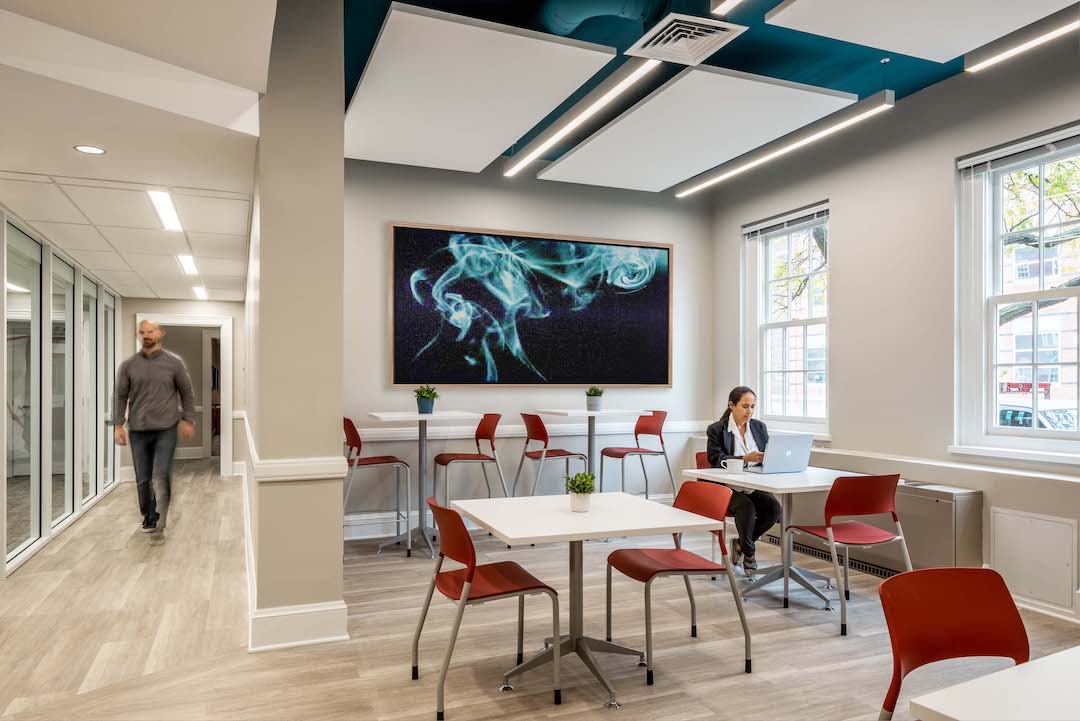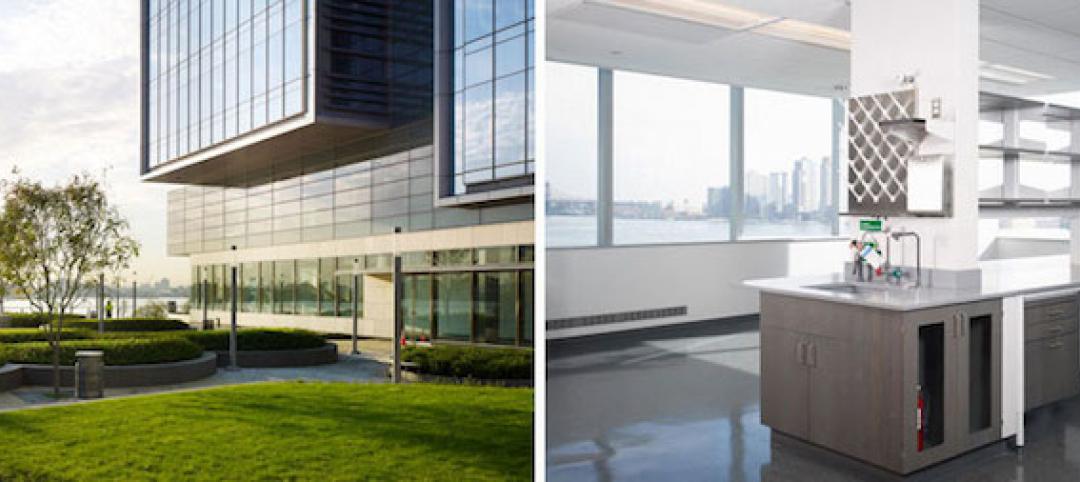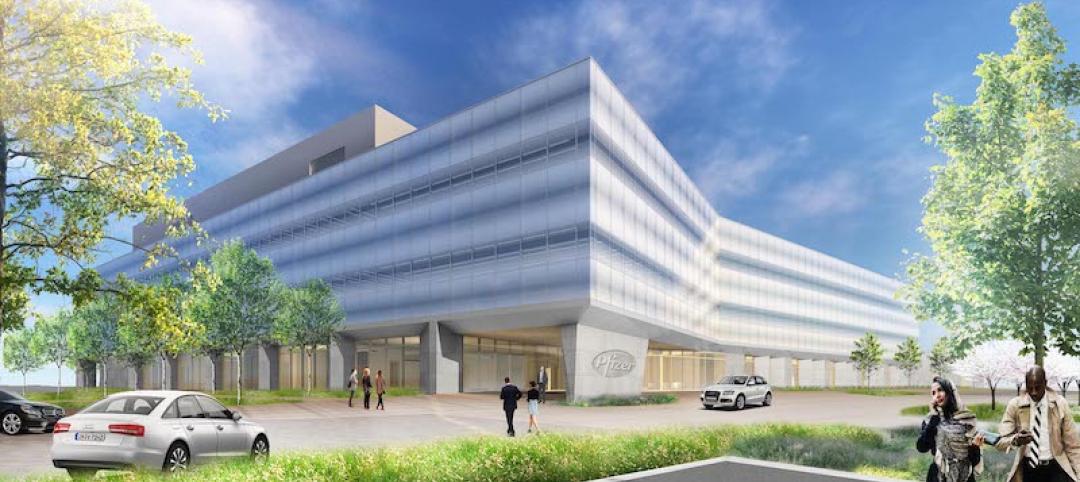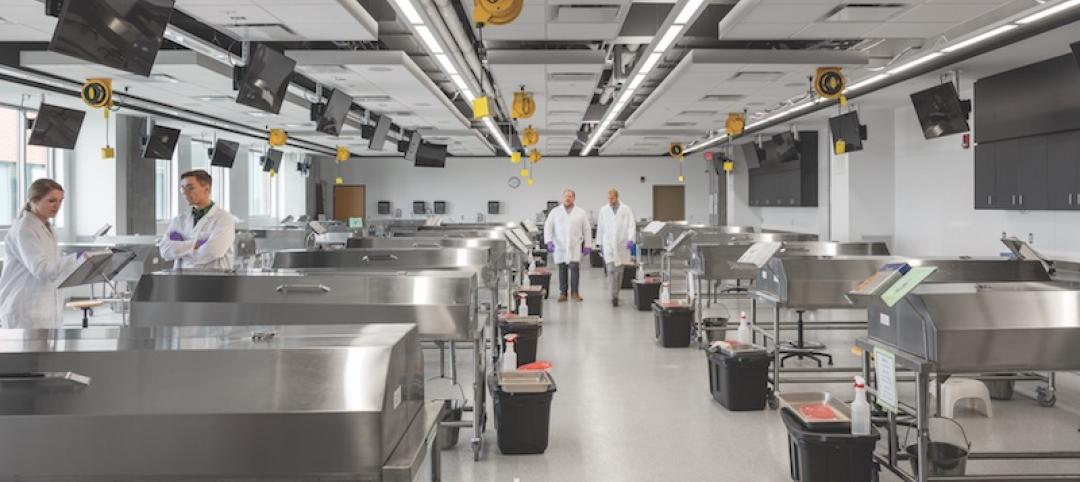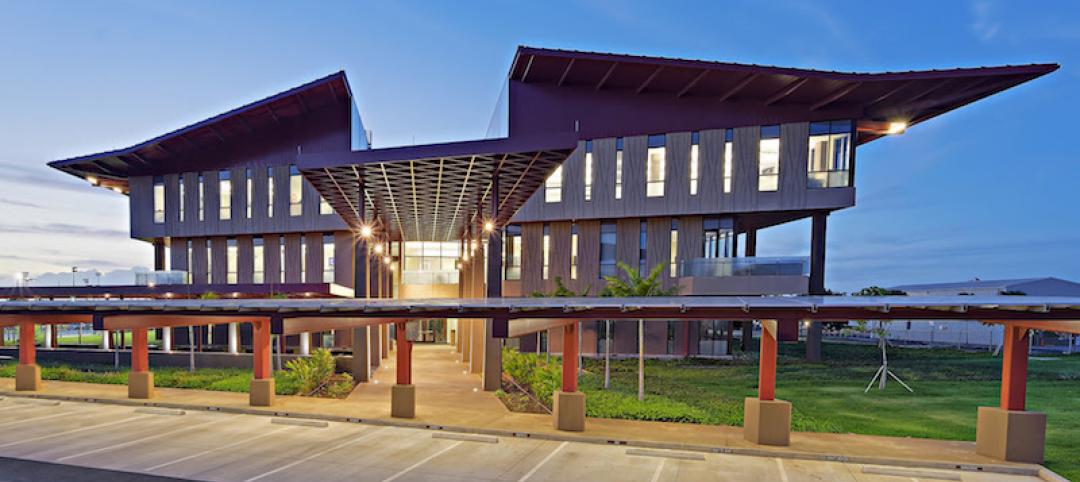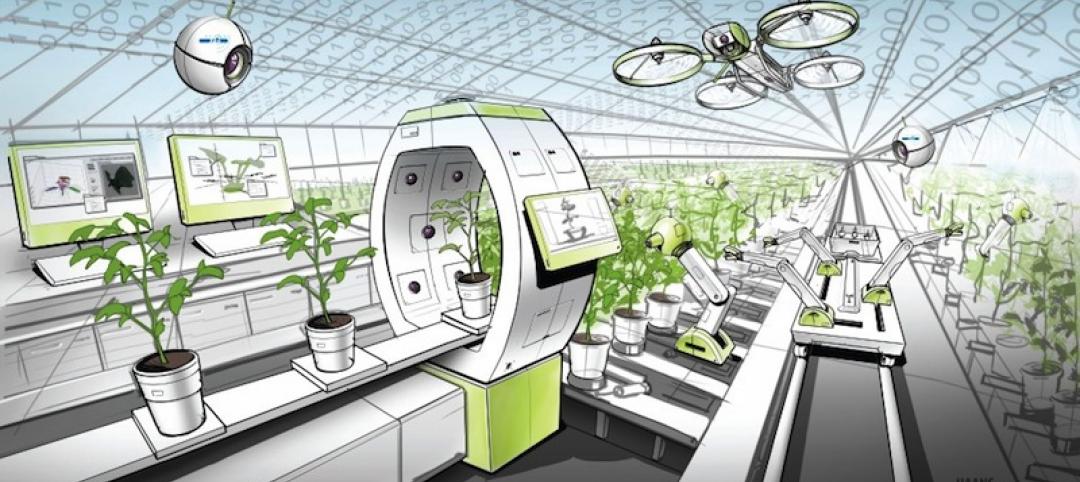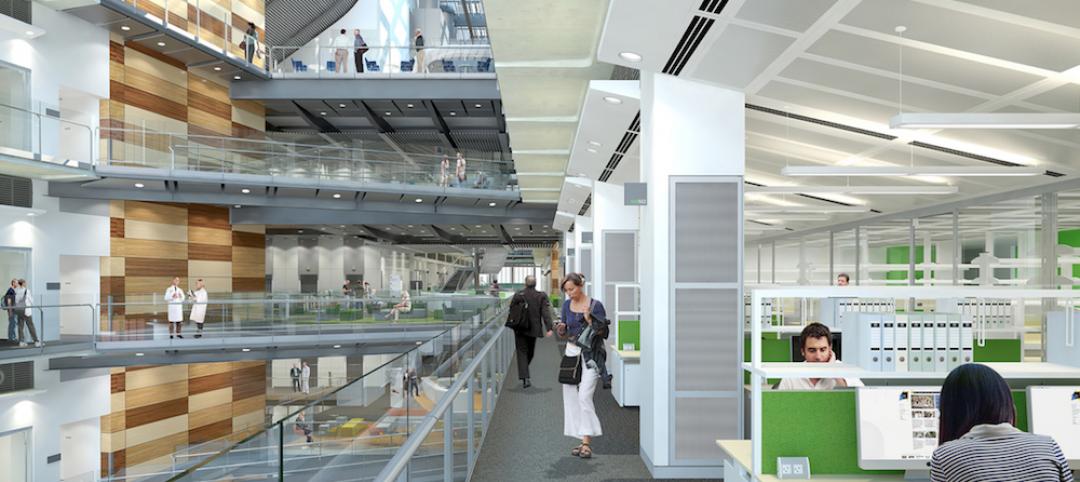Svigals + Partners has recently announced the completion of the New Haven Innovation Labs, an incubator space for startup bioscience research organizations located inside the historic John B. Pierce Laboratory building in New Haven, Conn.
The project redesigned and modernized the facility, including 6,000-sf of flexible research space and offices on the building’s third floor, plus shared amenities on the first floor. The new space provides scientists and staff with refreshed lab facilities and welcoming gathering areas while honoring the building’s historic character.
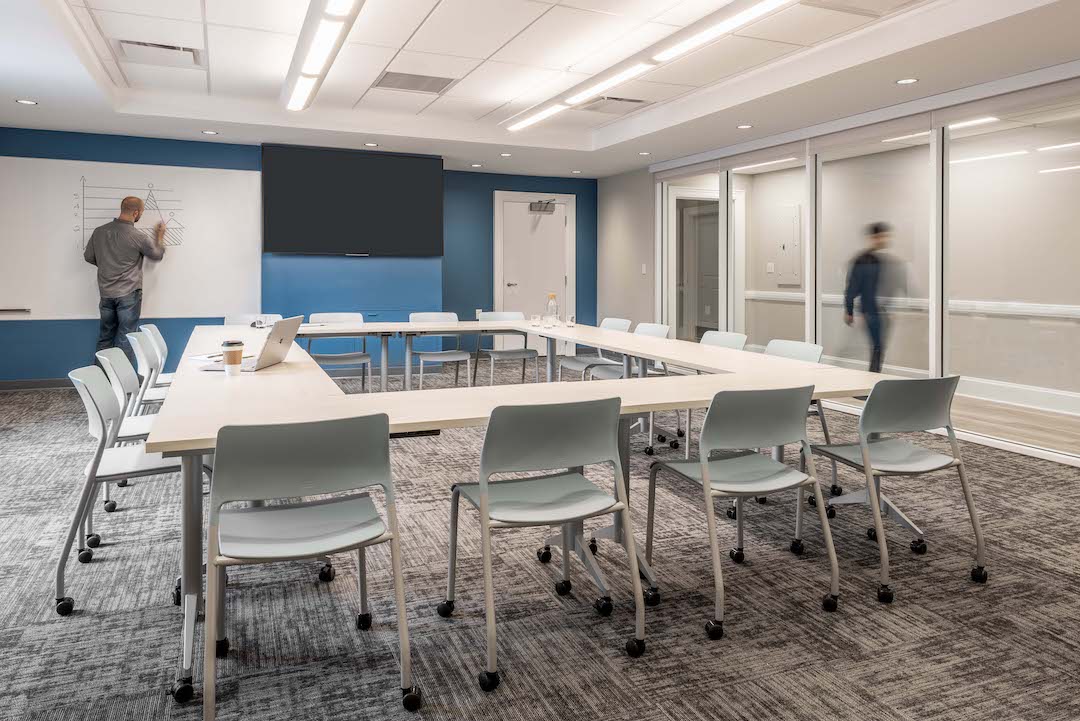
On the first floor, the design team repurposed underutilized office space to expand and update the break room and conference rooms. Two floors up, the existing layout of a single laboratory space was divided into several smaller research spaces. Ceiling heights were raised in the laboratory areas, exposing the mechanical systems overheard and helping to give the volume an airy feel and an industrial vibe.
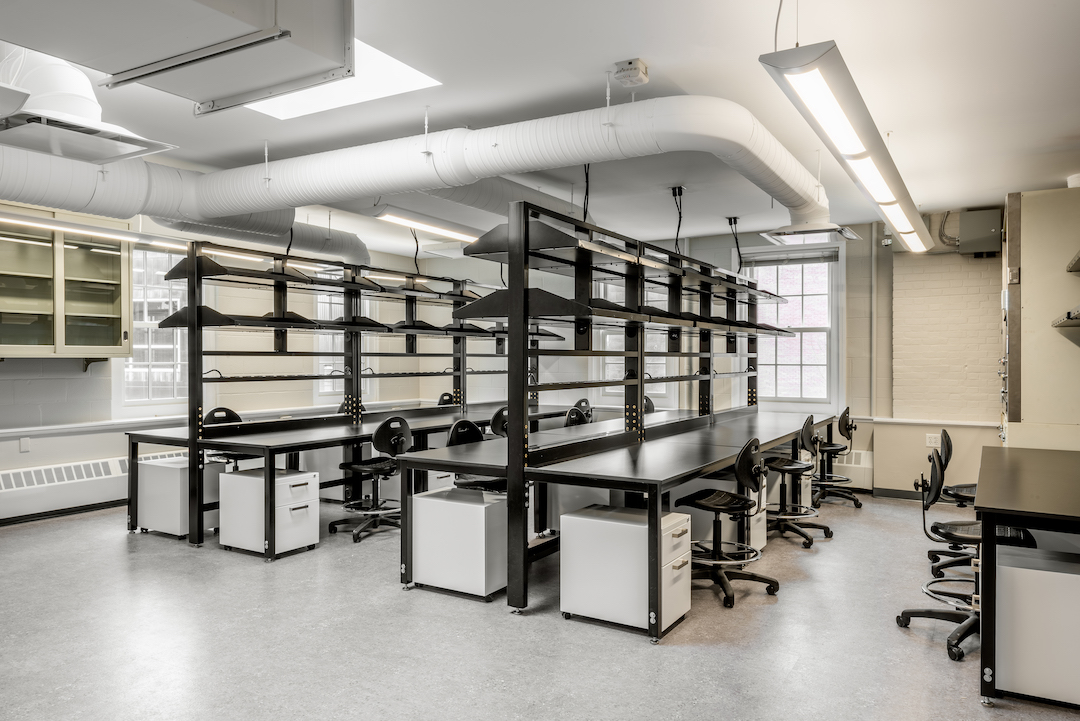
The building’s infrastructure was updated with robust rooftop and interior mechanical units to serve all floors, including the third-level laboratories’ sinks and fume hoods. The remaining portion of the floor plate comprises private and shared offices that tenant firms use for administrative work.
The project is also the latest result of an ongoing collaboration with BioCT, aimed at further establishing New Haven as a center of research for life sciences.
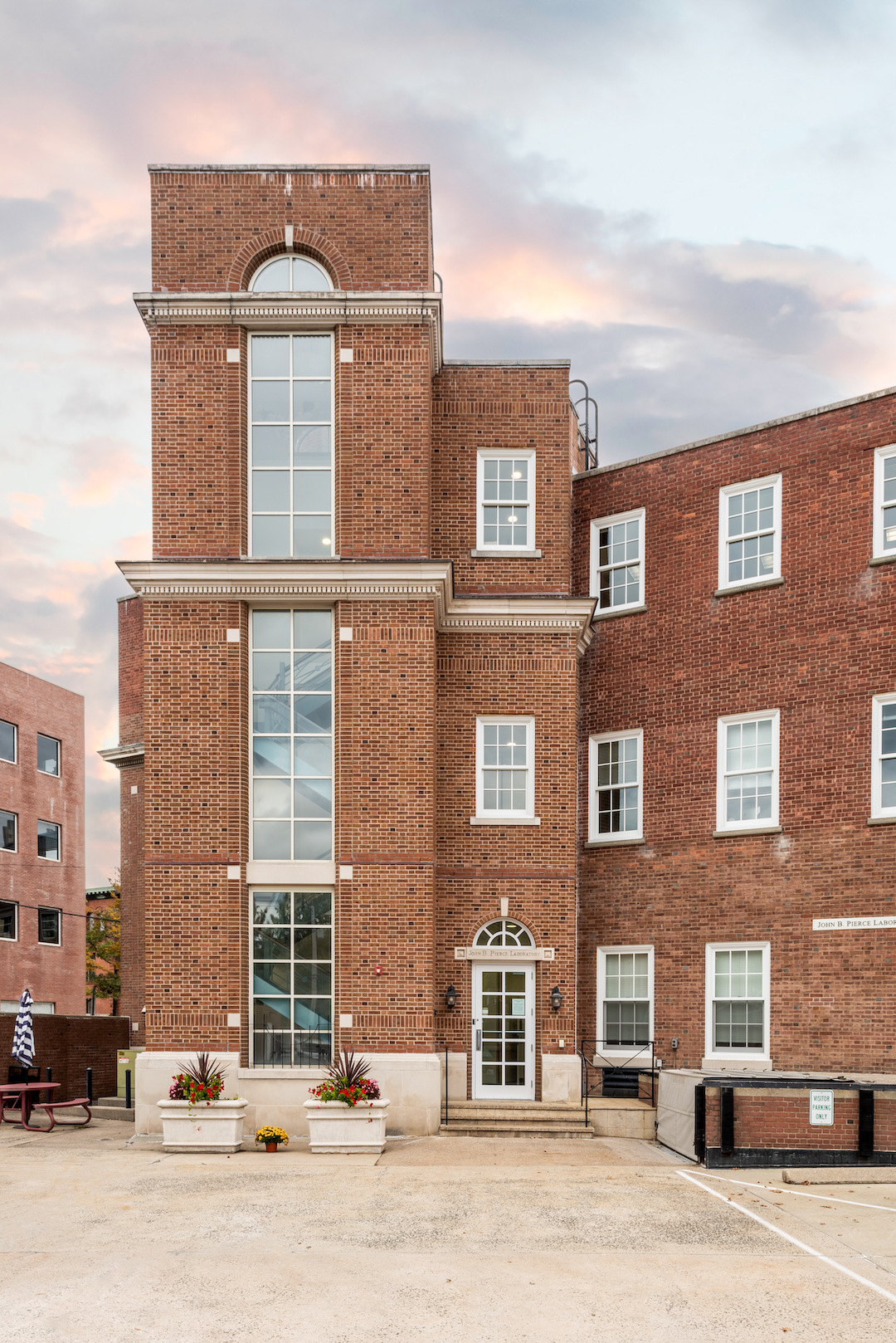
Related Stories
Laboratories | Sep 12, 2017
New York City is positioning itself as a life sciences hub
A new Transwestern report highlights favorable market and regulatory changes.
Laboratories | Aug 3, 2017
Today’s university lab building by the numbers
A three-month study of science facilities conducted by Shepley Bulfinch reveals key findings related to space allocation, size, and cost.
Laboratories | Jul 18, 2017
Pfizer breaks ground on new R&D campus in St. Louis suburb
The facility will consolidate the company’s local workforce, and provide flexible work and research spaces.
Building Team Awards | Jun 12, 2017
The right prescription: University of North Dakota School of Medicine & Health Sciences
Silver Award: North Dakota builds a new medical/health sciences school to train and retain more physicians.
Laboratories | Apr 13, 2017
How to design transformative scientific spaces? Put people first
While most labs are designed to achieve that basic functionality, a transformational lab environment prioritizes a science organization’s most valuable assets: its people.
Laboratories | Sep 26, 2016
Construction has finished on the world’s largest forensic anthropology lab, designed by SmithGroupJJR
The lab’s main purpose will be to help in the investigation, recovery, and accounting of Americans lost in past wars.
Laboratories | Aug 8, 2016
The lab of the future: smaller, flexible, tech-enabled, business focused
A new CBRE report emphasizes the importance of collaboration and standardization in lab design.
Laboratories | Jun 16, 2016
How HOK achieved design consensus for London's Francis Crick Institute
The 980,000-sf, $931 million facility is the result of a unique financing mechanism that brought together three of the U.K.’s heaviest funders of biomedical research—the Medical Research Council, Cancer Research UK, and the Wellcome Trust—and three leading universities—University College London, Imperial College London, and King’s College London.


